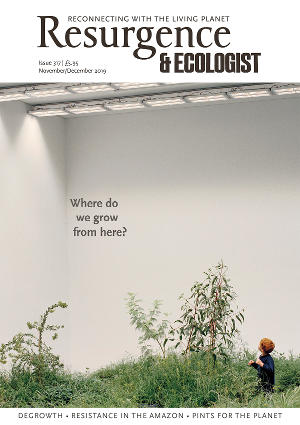One Planet Cities’ is primarily for the architects, planners and civil servants who shape the physical landscapes of human lives, and it opens with a stark truth: “We have two years to prevent an ecological meltdown that threatens the existence of the human species.” David Thorpe is clear that no country or city lives within the nine planetary boundaries identified by WWF and the Stockholm Resilience Centre, and as a species we haven’t done so since the 1970s. Vietnam is doing well on many indicators, but in 2018 its Earth Overshoot Day (the date on which a country’s ecological resources and services exceed what it can sustainably generate in a given year) fell on 21 December; this year the UK overshot on 29 July. Considering that the world’s population is now 7.5 billion and is predicted to peak at 11.2 billion by 2100, it’s clear we need to change the way we live, and as most humans live in cities, which are the main source of emissions and consumption patterns driving ecological apocalypse, cities need to adapt.
Thorpe, who is a fiction writer as well as a One Planet polymath, decries dystopias, and he appeals to writers to create positive visions of the future, particularly the urban future, and for planners to write, draw or otherwise create their vision. He believes that imagining the future is “the first stage in the task of creating it”. It is this call to the imagination that sets this book on a different level from, I suspect, most planning textbooks.
Other themes that resonate in ‘One Planet Cities’ are the focus on social justice, particularly the “safe and just space” of Kate Raworth’s doughnut economics, whereby everyone’s needs are met but no limits are exceeded; the need for localising food and creating circular economies; and the insistence that civic engagement is crucial to inform decision-making from the outset of a planning process, and that civil society has agency and can be a force for change.
I got bogged down in the chapters on establishing standards for measurement – hectares required per human, ISOs and what to do with them, and so on – but a planner is required to use metrics to inform and justify decisions, and Thorpe has put together a menu of those that are relevant. None of them were designed for ecological or biodiversity footprinting, but broken down and put back together creatively they can serve that purpose. Thorpe provides a wealth of case studies, some cautionary, and it is inspiring to know that so much is going on globally. He believes thatcities can save nations, if given enough scope and independence to act.
The final study in this book is the Welsh Well-being of Future Generations Act, enshrining in policy since 2016 that “any publicly funded body must act in a manner which seeks to ensure that the needs of the present are met without compromising the ability of future generations to meet their own.” Of course, legislation can be repealed, and people must know about it to invoke it, but I found myself profoundly moved by the scope of Welsh ambition, and I hope fervently that other governments will learn from it.
The book closes with a short story, a sketch of life in a city of the future. It might not suit everyone, but then it behoves people to imagine their own and to put the work in to make it real. In a world perched on the edge of many possibilities, Thorpe has drawn vital maps of several paths that lie before us.







